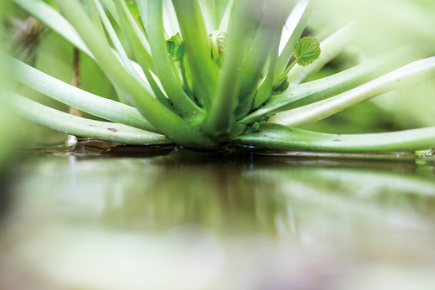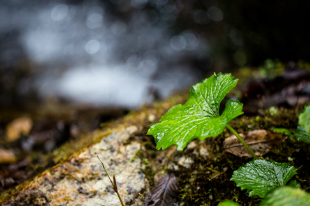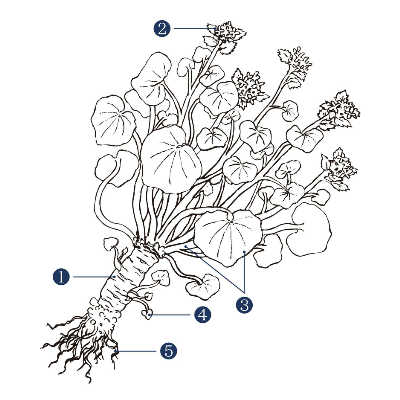What is Shimane Wasabi ?

Takatsu River
Takatsu River is one of the few rivers famous in Japan for its clear streams and rich water quality with its river basin located west of Shimane prefecture in Tsuwano town. Takatsu river flows continuously as there are no dam that obstructs the flow. The river is 81 kilometers long and flows from Yoshika town, through Tsuwano town, Masuda city and into the Sea of Japan. As the river is constantly flowing, fresh water is available at any point, making it a river of high importance. Half way down the river, broad leaf trees, mainly the Japanese Beech trees in the Azouji mountain range releases its nutrients into the river. This serves as nourishment for the Wasabi and hence, high quality wild Wasabi can be found in this area.
Cold weather and Tree Shade

Located between the shadows of the mountain valley in the San’in region, the Wasabi grows gradually by absorbing the nutrients in the water during the extreme winters of Shimane.
Care and Wisdom

Wasabi farmers face many difficulties and hardship cultivating Wasabi in the mountain river. They continue to research and improve the cultivation method and with diligent care and knowledge, the Wasabi is ready to harvest after two years.
Piquant yet mildly sweet

Shimane Wasabi is rich in its piquant flavour, mildly sweet with a scent of fresh green leaves and is thick in texture.
Every part of the Shimane Wasabi can be enjoyed
①【Rhizome (Potato)】

②【Flower Bud and Flower】
In April, small, white, cross-shaped Wasabi flowers bloom in the field and gives out a sweet flowery scent. The flower bud can be eaten, is soft, sweet in scent and is mildly piquant in flavour.
<Recommendation>
Blanch and eat with bonito and soy sauce or bonito stock soup.
③【Stem and Leaf】
<Recommendation>
Pickled soy sauce Wasabi
⑤【Root】
The long, thin roots which grow from the bottom of the rhizome spread themselves deep beneath the soil to absorb minerals and oxygen. The white-coloured roots are washed before consuming. It is simply piquant and does not have any other distinct flavour.
<Recommendation>
④【Wasabi Shoot】
The bud from a parent Wasabi branches out as a lateral shoot and grows its independent rhizome. It is one of the more piquant parts of the Wasabi.
<Recommendation>
Pickled soy sauce Wasabi

①【Rhizome (Potato)】
The Wasabi continuously grows and shed its leaves onto the ground and the rhizome grows beneath it.
The jagged parts of the Wasabi are traces of the nodes. The top part of the rhizome tends to have a strong piquant flavour and the bottom part has a thicker viscosity.
<Recommendation>
Grate and use as a condiment for Sashimi, Roasted beef, Soba noodles, Yakitori etc.
②【Flower Bud and Flower】
In April, small, white, cross-shaped Wasabi flowers bloom in the field and gives out a sweet flowery scent. The flower bud can be eaten, is soft, sweet in scent and is mildly piquant in flavour.
<Recommendation>
Blanch and eat with bonito and soy sauce or bonito stock soup.
③【Stem and Leaf】
The leaves are dark green and are in the shape of a heart, those harvested from late autumn to spring are crunchy and soft in fiber.
<Recommendation>
Pickled soy sauce Wasabi
④【Wasabi Shoot】
The bud from a parent Wasabi branches out as a lateral shoot and grows its independent rhizome. It is one of the more piquant parts of the Wasabi.
<Recommendation>
Pickled soy sauce Wasabi
⑤【Root】
The long, thin roots which grow from the bottom of the rhizome spread themselves deep beneath the soil to absorb minerals and oxygen. The white-coloured roots are washed before consuming. It is simply piquant and does not have any other distinct flavour.
<Recommendation>
Wasabi Seaweed Paste
How to handle and preserve Wasabi
■ Preparing fresh Wasabi Rhizome

■ Different graters bring out different flavours
■ Recommended grating method

■ Effect of temperature on flavor
■ How to preserve the Wasabi





